 At this moment, the spectacular wildebeest migration is taking place in the Serengeti prairie.
At this moment, the spectacular wildebeest migration is taking place in the Serengeti prairie.
As one of nature's most breathtaking landscapes, the magnificent scene has won the attention of many visitors.
It is not known that many creatures on the earth have never stopped the pace of migration, from huge whales to tiny zooplankton.
But,
Why do animals migrate?
Humans began to notice the migration of animals in the Stone Age. Since then, animal migration has caused human curiosity, surprise, and even religious enthusiasm.
Each social development stage has produced corresponding stories to explain this mysterious natural phenomenon, and rituals and festivals have been developed to commemorate the endless back and forth of these migratory animals.
(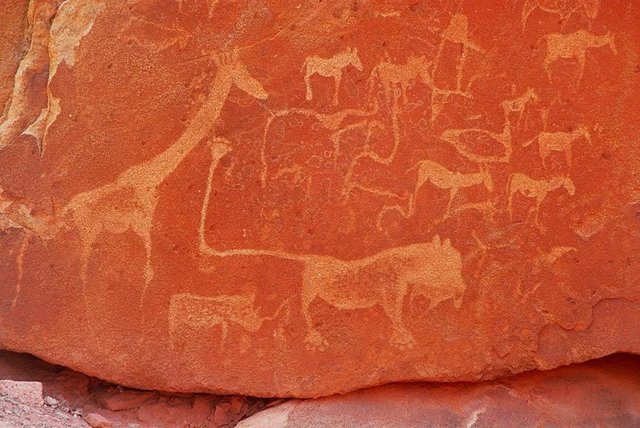 )▲ Rock paintings in Namibia, Africa,
)▲ Rock paintings in Namibia, Africa,
Providing humans with historical clues about the existence of migratory species
In ancient Greece, Aristotle realized that many birds had migratory behavior, and some summer migratory birds (such as swallows and mites) suddenly disappeared. He believed that these species miraculously transformed into different species that appeared in winter.
His theory of transformation has been popular in Europe until the Middle Ages.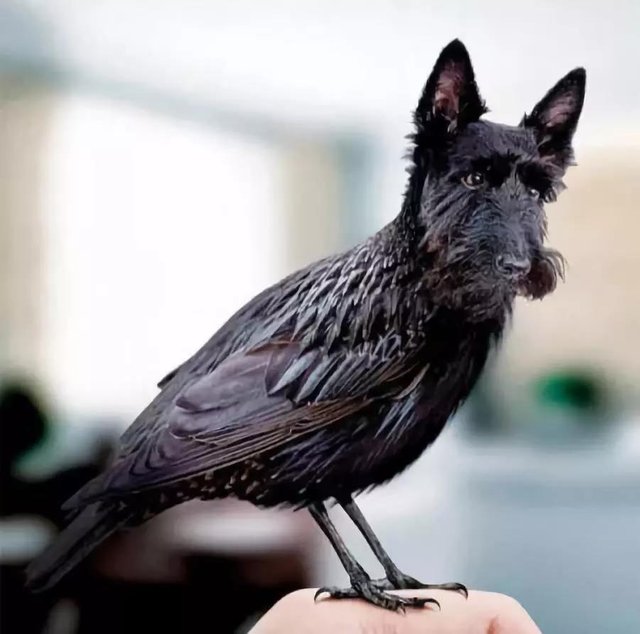
Until the 18th century, with the birth of the discipline of ecology, the invention of the species classification system, naturalists explored the world, discovered and named thousands of species, and slowly improved our Understanding of animal migration patterns.
After entering the 20th century, our understanding of animal migration has made great progress. It allows individual animals to evolve and survive by living in two or more areas for some reason without being able to survive in a region for a long time.
These specific reasons will include:
Seasonal replacement
- Tidal changes
- Lack of food or extreme weather changes
- Look for water or essential minerals
- Find a spouse
- Birth, spawning or childbirth in a safe place
- Avoid predators or parasitic insects, etc.
- Results driven by multiple factors
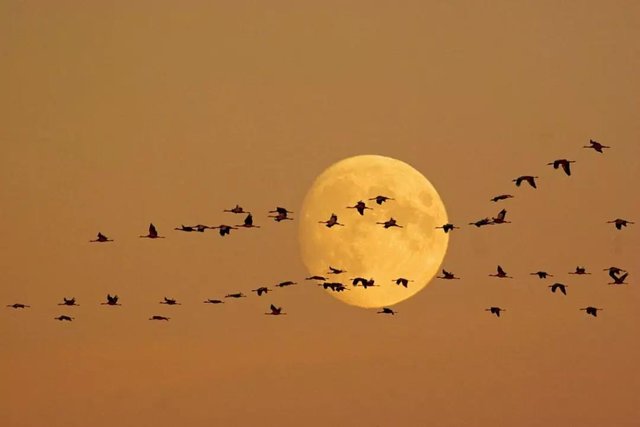 ▲From ancient times,
▲From ancient times,
Every spring and autumn,
The beautiful figure of the gray crane can be seen over Europe.
In the Iliad,
Homer called the gray crane’s summoning sound
The sound of the enemies that are gradually approaching is as loud as the sound.
Today, scientists have been able to systematically study animal migration through a variety of technological devices and means, and even obtain real-time, detailed and diverse forms of animal migration maps.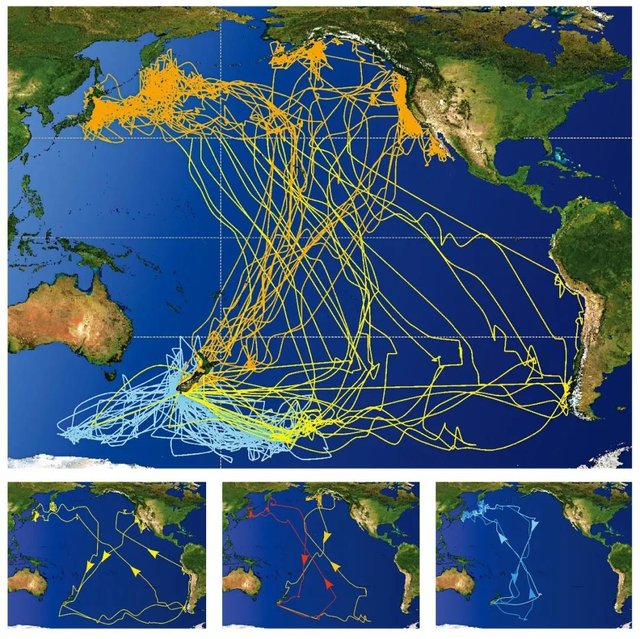 ▲Bird migration route map drawn by satellite tracking technology
▲Bird migration route map drawn by satellite tracking technology
Many mysterious journeys that humans once thought were recorded. Looking at the colorful lines on the map, we have to marvel that the meaning of life is higher than everything. All the hard work is to live.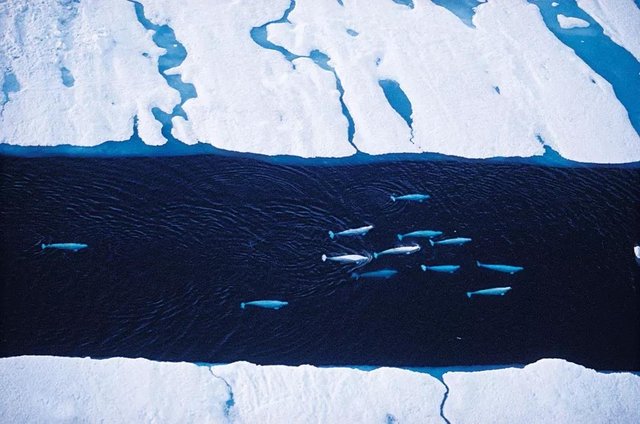 ▲The beluga whale uses the cracks of the Arctic ice floes,
▲The beluga whale uses the cracks of the Arctic ice floes,
Migrating along hundreds of kilometers of traditional routes
Every moment, there are a large number of animals on the earth that travel long or short on land, water and air. Undoubtedly, their journey is thrilling and fascinating.
Ubiquitous migration
On land
Reindeer, African Elephant, Christmas Island Red Crab
Reindeer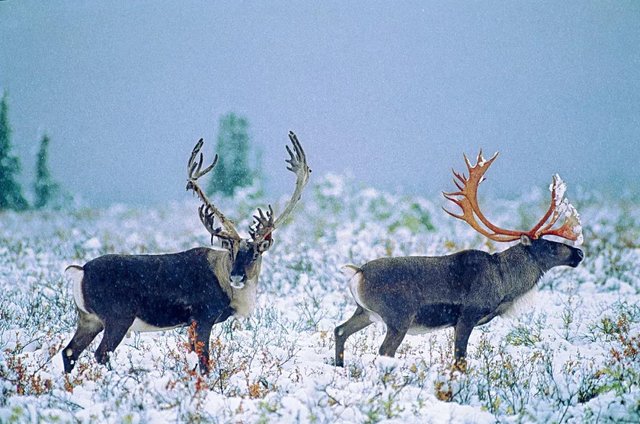 It is reasonable for the reindeer to be selected by Santa Claus. They are the wedding champions of the deer and the species that are the furthest away from the terrestrial mammals in a year.
It is reasonable for the reindeer to be selected by Santa Claus. They are the wedding champions of the deer and the species that are the furthest away from the terrestrial mammals in a year.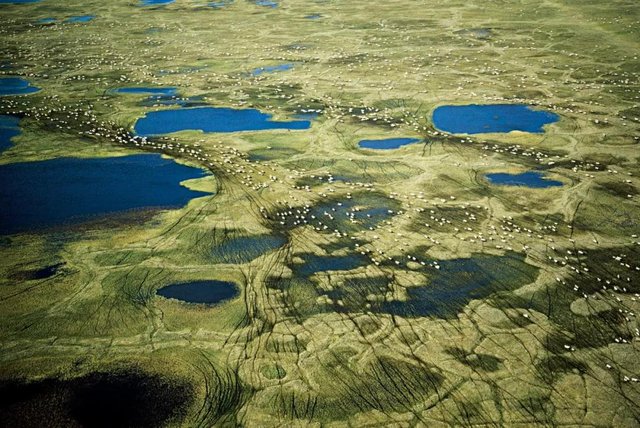
▲A group of Alaskan reindeer passed through the soft tundra,
Move north to the feeding area,
And there is accumulated fat for the coming winter.
In the known data, some reindeer can migrate 6,000 kilometers per year.
On the way, the reindeer can determine the migratory route through visual landmarks, electromagnetic fields and the sun, ensuring that the same breeding ground in the tundra is returned each summer.
The reindeer not only runs far, but also runs fast. The newborn baby deer can run the Olympic sprinter when he is only 1 day old.
African elephant
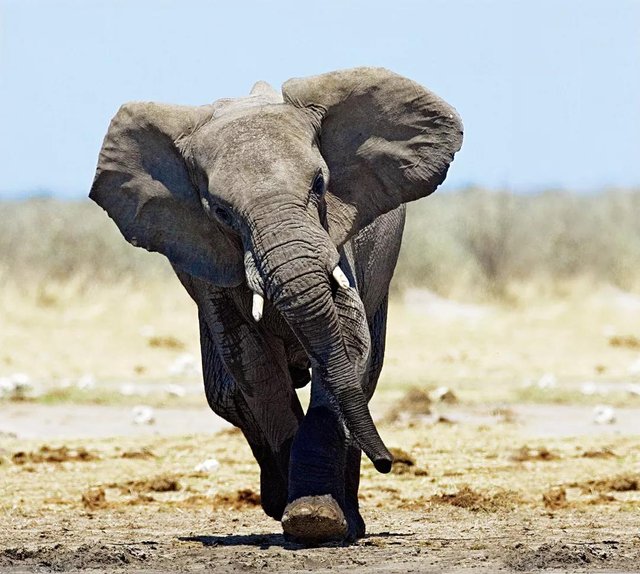 An adult male African elephant needs 300 kilograms of food a day, which is equivalent to 5% of its own weight. The demand for minerals that are lacking in fresh water, adequate food and food makes elephants have to migrate.
An adult male African elephant needs 300 kilograms of food a day, which is equivalent to 5% of its own weight. The demand for minerals that are lacking in fresh water, adequate food and food makes elephants have to migrate.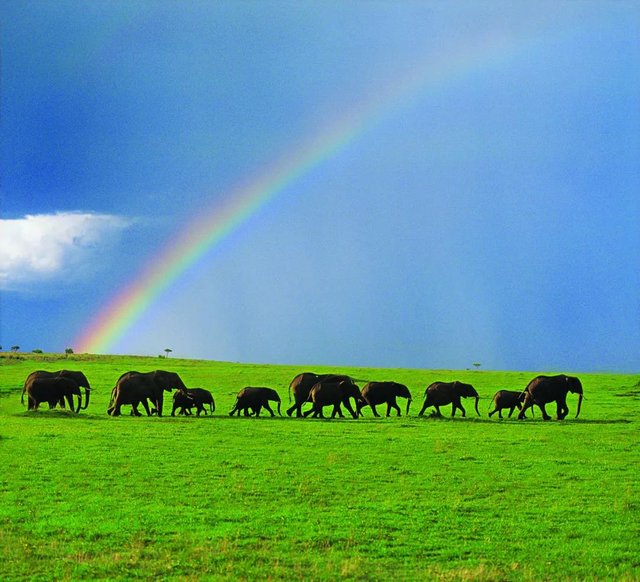 ▲ Xiang Qun migrates in a close family
▲ Xiang Qun migrates in a close family
The weak young elephant is protected in the middle of the elephant group.
At the end of August, when the most of the puddles in the area were dry, the temperature of the noon was as high as 40 °C, the number of African elephants in the Chobe River area reached 45,000, and the elephant group traveled 325 kilometers to reach the river. The 'highway' of the elephant group will also be used by other animals, which is very beneficial to The savanna ecosystem, which can both turn the soil and promote the growth of the plant.
In addition, the male elephant's periodic search for spouses is also an important reason for their migration.
There is evident evidence that sound plays an important role in elephant migration, and elephants can even perceive storms 250 kilometers away, allowing them to go directly to the rain, so that they can eat fresh pasture. . They hear the sound not only by the Ear, but also by the shock receptors (Pasini's body) wrapped in the nerves of the feet.
Christmas Island Red Crab
 ▲ I can run rampant and love overbearing.
▲ I can run rampant and love overbearing.
Because: I am red!
Located south of Indonesia, Christmas Island is a green spot on the Indian Ocean.
When the first rain falls on the island during the rainy season, countless red crabs will flock from the rainforest and head to the ocean to lay eggs. This is the annual migration of the Christmas Island Red Crab.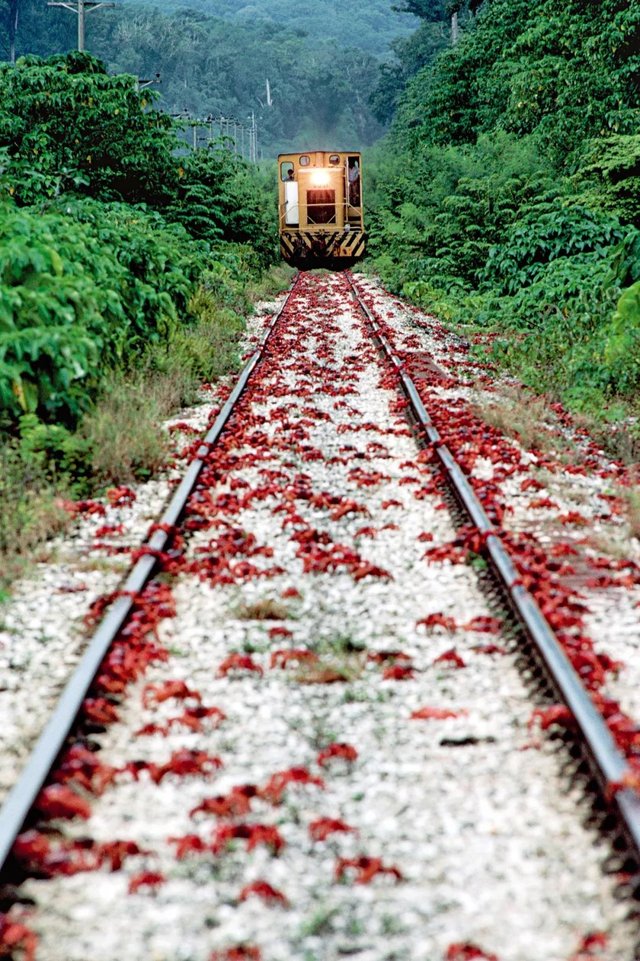 Christmas Island Red Crab belongs to terrestrial crabs and does not have the ability to reproduce in fresh water, so the annual Indian Ocean monsoon becomes a signal that they are going to the ocean
Christmas Island Red Crab belongs to terrestrial crabs and does not have the ability to reproduce in fresh water, so the annual Indian Ocean monsoon becomes a signal that they are going to the ocean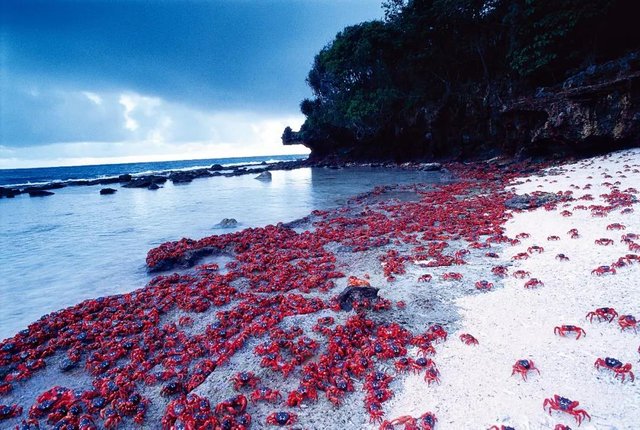 ▲ Christmas Island Red Crab successfully arrived at the destination
▲ Christmas Island Red Crab successfully arrived at the destination
The female will stay in the hole for two weeks, waiting for the fertilized eggs to mature, then climb out in the night and throw the eggs into the sea at the climax of the second quarter.
Groups of females gather at the top of the lower cliffs that surround the island. They shake the body and gently pat the edges of the eggs. These eggs rupture when they fall into the water, and hundreds of millions of crab larvae that are visible under The whole sea surface will be stained with blood red, after which the female crab will return to the forest for feeding and recovery.
In the next five weeks, the young crabs need good luck to escape the predator from the wind and eventually develop into a returning rainforest.
It is worth mentioning that the local government and residents take care of these rampant little guys and even build a migratory road for them. They also close roads or railways during the migration season, and try to reduce the human activities during the migration process. Threat .
Humpback whales
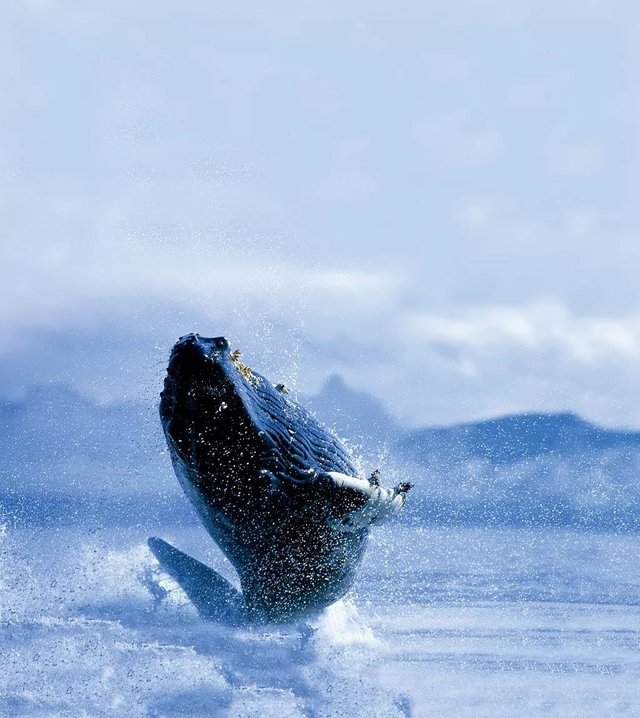 ▲ There is nothing in this world,
▲ There is nothing in this world,
It’s a meal that can't be solved.
Humpback whales are the longest-migrating species of mammals known to migrate from tropical waters to food-rich polar seas before returning to tropical waters.For humpback whales, eating a full stomach is more important than everything else, even the polar icy waters are worth a visit.
In the Arctic, nutrient-rich upwelling has prompted the outbreak of tiny plants, supporting a productive ecosystem that includes zooplankton, fish, squid and large predators. There they can enjoy the feast.
Here, you can see the unique cooperative predation method of the whales evolved by humpback whales - the bubble net predation method: 3 to 4 humpback whales cooperate to smash the fish or krill group into a dense group. Exhaling the bubble surrounds these panicked fish and Blocks the route they escape.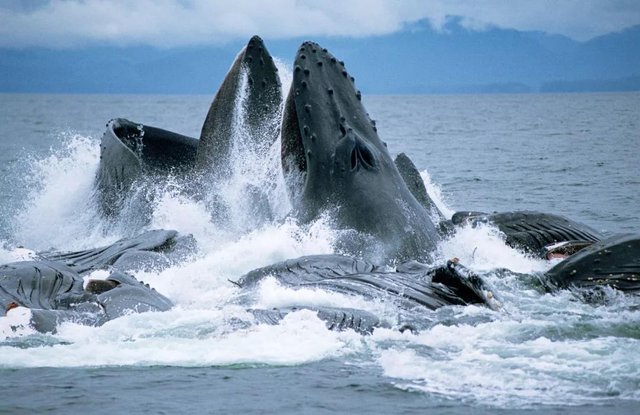 ▲Hatchback whale foam net predation method
▲Hatchback whale foam net predation method
However, the moment of happiness is always short. When the temperature of the sea drops, the zooplankton will go to sleep on the bottom of the sea.
After the humpback whale fills the belly, each will add about 10 tons of blubber. The satiated whales will migrate in a straight line to the warm, low latitudes of the sea to mate and give birth.
From the map, we can also see the distribution of humpback whales in the northern and southern hemispheres, which reach the tropical and subtropical waters at different times, but rarely meet each other, so although the same species, the genotypes are very different.
Turtle
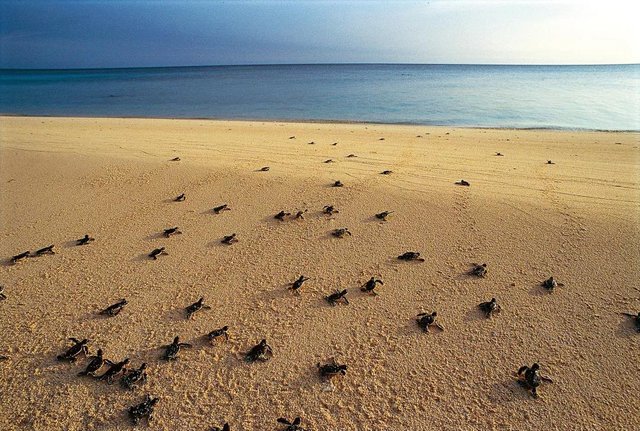 ▲ For children, don’t eat or drink
▲ For children, don’t eat or drink
Turtles formed by volcanoes have evolved to lay eggs on remote islands, where few predators pluck their eggs and fragile young turtles with soft shells.
Their traditional spawning grounds are called rookeries, the most famous of which is Ascension Island, a 13-kilometer-long island located in the middle of the Mid-Atlantic between Brazil and the west coast of Africa.
From the feeding area of the Brazilian coast, sea turtles need to migrate at least 2,250 kilometers to reach the remote residence of this volcano.
Because green turtles feed on algae along the coral reefs or seaweeds in the secluded bays, they are unable to feed during migration. In addition, the waters around Ascension Island lack their favorite foods, so they can only eat again when they return to Brazil in a few months.
Female sea turtles breed every 25 years, and like other slow-growing species, they have a long life span with an average lifespan of more than 80 years.
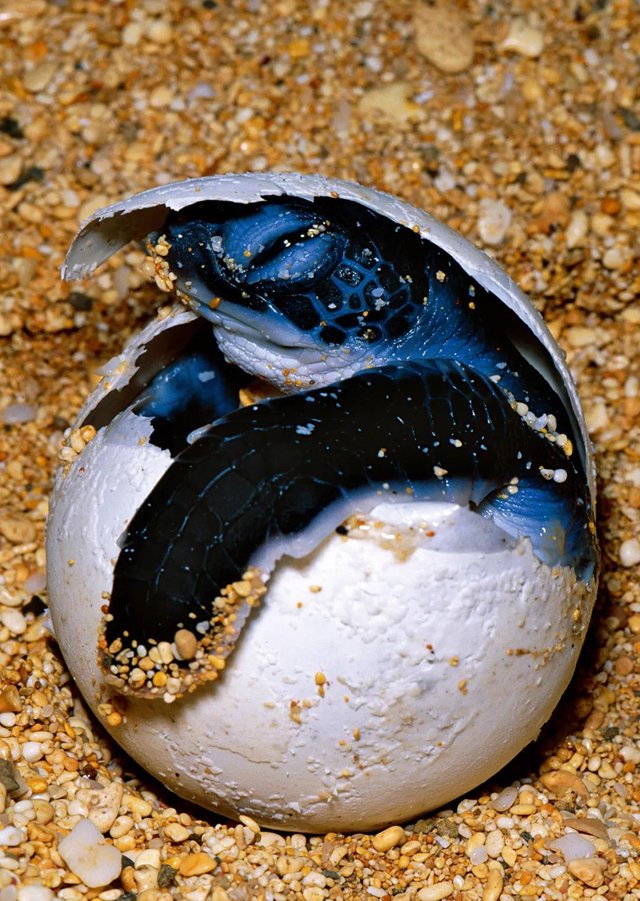 ▲The young turtle breaks the leathery turtle shell through the broken egg teeth that grow at the end of the kiss.
▲The young turtle breaks the leathery turtle shell through the broken egg teeth that grow at the end of the kiss.
Turtles may navigate through the position of the sun and stars, and may also navigate through waves and sparsing grounds in a vast ocean has always attract the attention of scientists. Currents, or gradients that follow different water temperatures. Another possibility is that they can sense changes in the Earth's magnetic field and form a 'ground map'.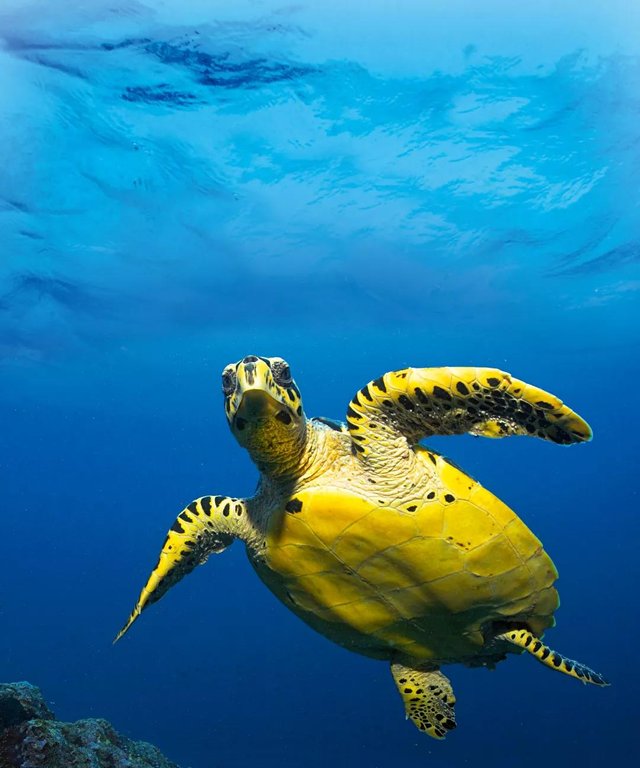 ▲ centuries or even thousands of years
▲ centuries or even thousands of years
Turtles will move to the same beach to lay eggs
They are driven by an exceptionally accurate home instinct
I was able to find the small island that was born many years ago in the ocean.
In one experiment, seven sea turtles on Ascension Island were loaded with electronic tracking devices and magnets used to disrupt electromagnetic navigation. Then the satellites of these alternating induced disturbed turtles returning to Brazil for satellite tracking, and found that they follow the migration path as effectively As the turtles without magnets, which means that magnetic induction may play a role in navigation, but it is not critical. Navigation method.
Giant squid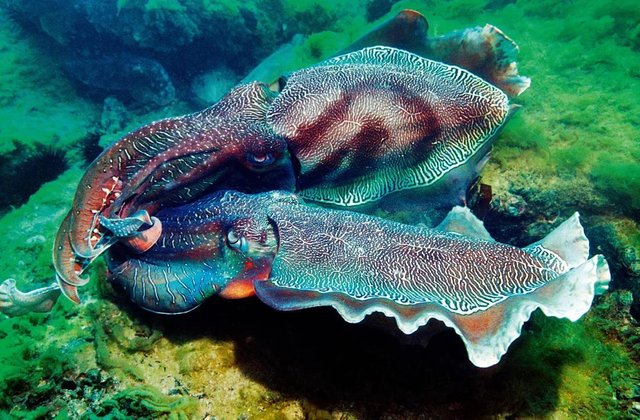 ▲Don't die after giving birth
▲Don't die after giving birth
Between all cephalopods, the migration of giant squid is probably the most spectacular and the most easily observed. The migration of giant squid appears in clear, transparent shallow waters, where hundreds of giant squid will fight and want to seize the last chance to participate in Reproduction before they die. This dramatic scene takes place in the southern hemisphere from May to July, depending on where it is and the temperature of the sea.
Unlike the typical nocturnal activity of cephalopod species, giant squid also be active during the day when spawning. This has led to the development of eco-tourism in hotspots such as Spencer Bay in southern Australia, where people can dive into high-density giant squid Populations.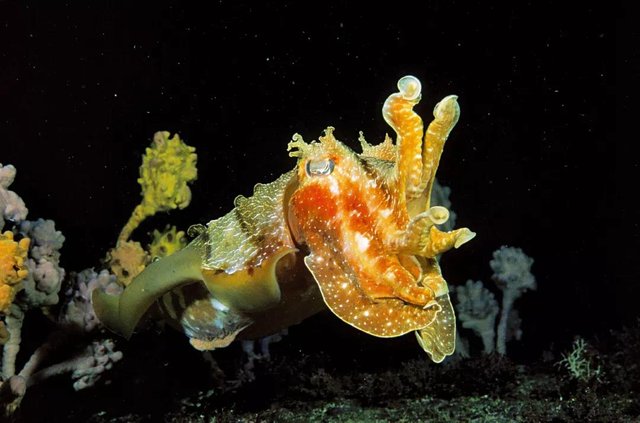 ▲ A male giant squid struggles on the reef
▲ A male giant squid struggles on the reef
Produces colored undulating stripes to intimidate the opponent.
Giant squid have a lifespan of less than three years, but as their name suggests, they can be as large as 1.5 meters long and 14 kilograms. Little is known about their life history, especially in the first two years of life in the ocean, But their spectacular forms of reproduction have been well documented.Male giant squid will compete for the site and gliding in the water as before and after performing ballet in an attempt to gain and protect the position in the reef. The ultimate male squid can get a chance to show off the female squid, who is hiding After the seaweed or rock near the reef to watch the 'dance' of the male squid. After mating, the female giant squid lays eggs in the cracks of the reef, so that their entire life history is completed.
Arctic tern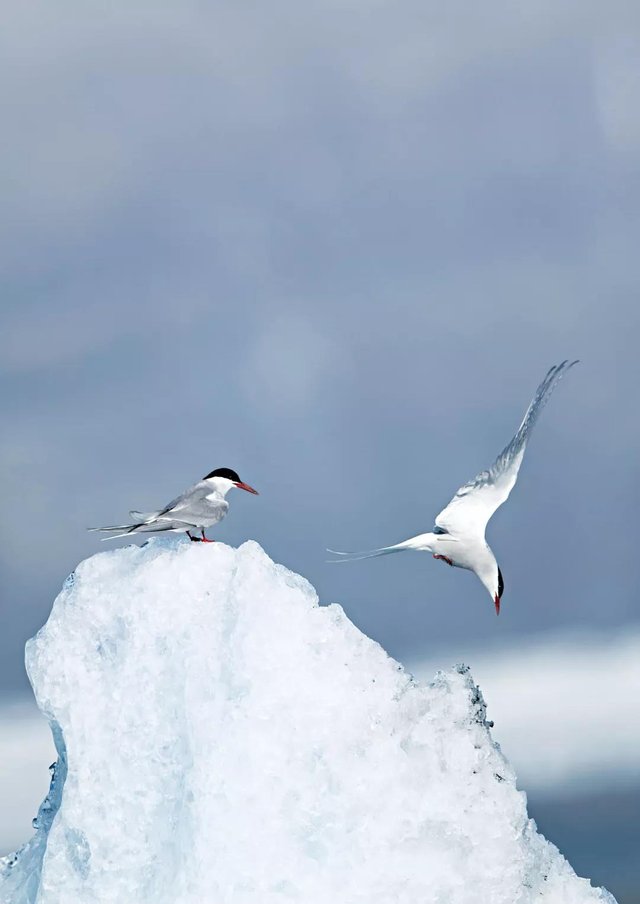 ▲ If you have known me for a long time,
▲ If you have known me for a long time,
There will be no more stories of Kuafu’s day by day.
The Arctic Tern performs an amazing global voyage between the high latitudes of the Northern Hemisphere and the edge of the Antarctic ice floes, consuming huge amounts of energy.
Some of them will experience both the Arctic summer and the Antarctic summer in a year, and experience more whiteness than any other creature on Earth.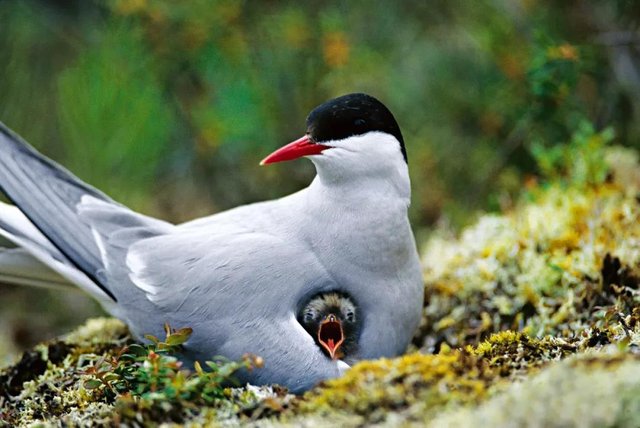 Out of love for the sun, the Arctic terns are doing their best to migrate further distances. Some individuals can migrate up to 50,000 kilometers per year, and their total mileage may be close to one million kilometers.
Out of love for the sun, the Arctic terns are doing their best to migrate further distances. Some individuals can migrate up to 50,000 kilometers per year, and their total mileage may be close to one million kilometers.
Their breeding grounds receive an average of 18 to 24 hours of light per day during the summer. In just over two months, they were able to pair, establish and maintain active areas, raise offspring, and return to sea life together.
Because of the global migration characteristics of Arctic terns, they are also only the only species that are fixed on seven continents.
Desert locust.
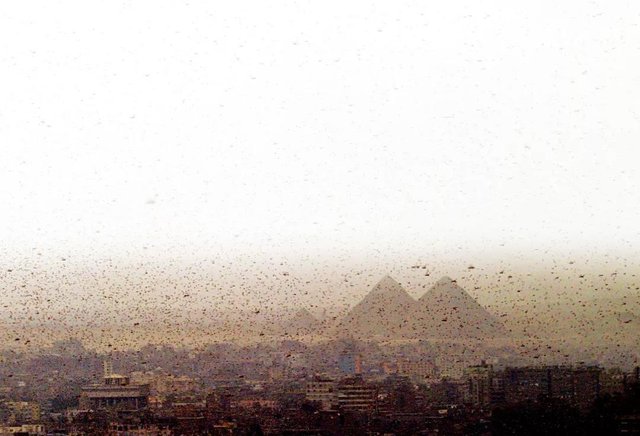 ▲ Nothing can stop,
▲ Nothing can stop,
My yearning for freedom
Desert locust populations will erupt from time to time.
These insects become greedy migratory and invade large-scale in the surrounding area.
The crickets quickly reached the scale of the disaster, leaving only bare stalks everywhere after they flew.
The biomass (body weight) of an African desert locust swarm is staggering.
The largest group of locusts, including 50 billion individuals, covers an area of 1,000 square kilometers and takes 6 hours to fully fly over your head. This size of locust swallows investments crops 500 people a year to eat.
Even more surprising is that these huge groups of insects usually do not know where to come from within a few days.
It is difficult to predict when a desert locust population will erupt.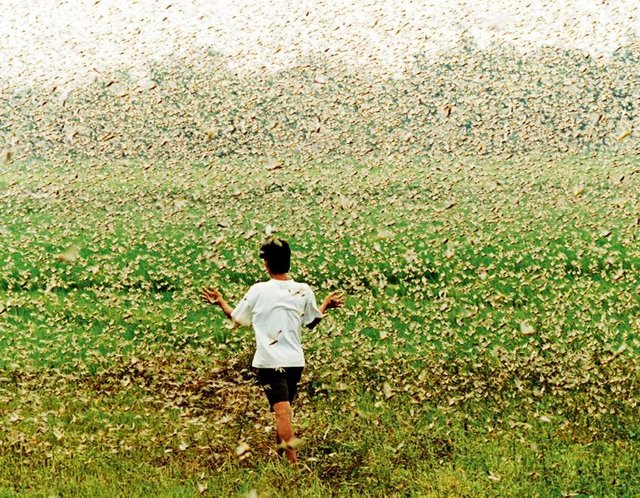 ▲ A farmer is trying to protect his farmland from being destroyed by locusts.
▲ A farmer is trying to protect his farmland from being destroyed by locusts.
But everything is in vain.
Despite being named desert locusts, they are not critical to habitats.
They can survive in any open or semi-open area, and species that are not particularly noticeable will become disasters if they
Constant reproduction and variability have led to an exponential increase in the number of locusts. Soon after, they started out in dense clusters and used wind power to complete very long-distance migrations. They only had one purpose for finding new lord eggs.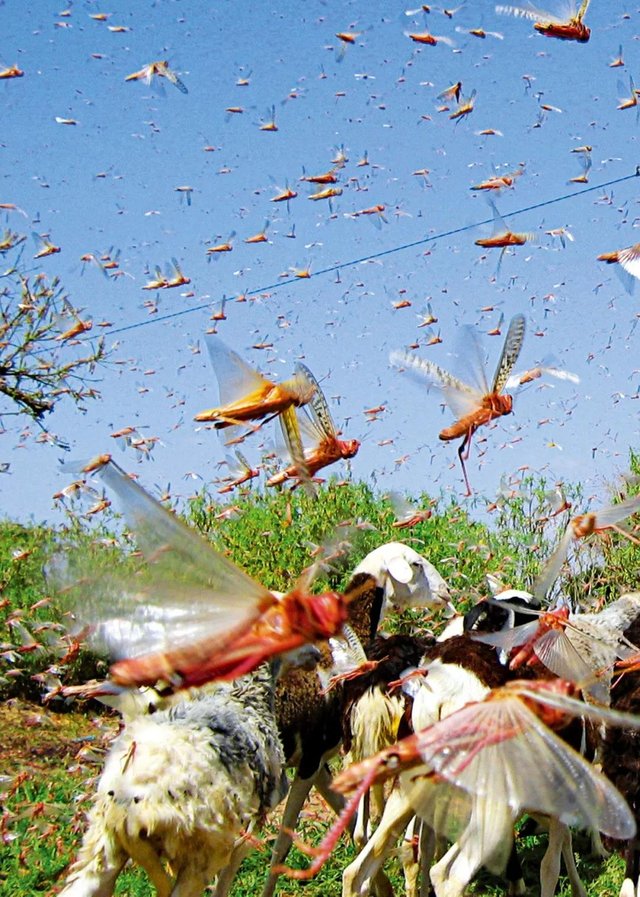 ▲ land infested by locusts
▲ land infested by locusts
The usual way to make it die is in the end of the world. Predation, disease or bad weather.
Conclusion
The migration of animals is complex and mysterious.
Human beings are also an important member of the 'life in motion' on the earth.
From the global migration of ancient humans to the largest migration of modern humanity - urbanization.
We and animals, in fact, have only one purpose - for better survival.
However, we seldom care about the migration of other species, only to see the way to the front.
Endless fossil burning, blind city expansion,
Climate change poses a deadly threat to sensitive migratory animals.
Combined with marine pollution, hunting and habitat destruction,
Animals may no longer be able to adapt to a variety of amazing changes and can no longer afford more damage.
Of course, with the development of sustainable development, global environmental governance, and ecological civilization construction,
We have begun to focus on spinning things around.
In the future, we need to have a deeper understanding of animal migration.
Requires extensive ecological governance and recovery across the globe,
Let the migration route on the map no longer decrease.